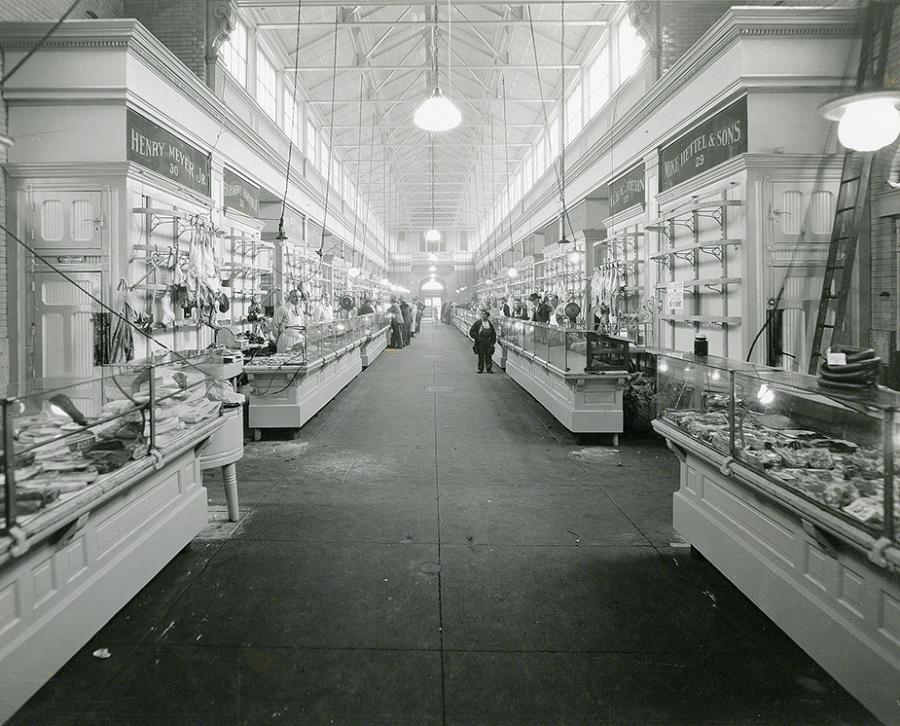For our February 2017 “Lost City” issue, we remember what time, disasters, and the wrecking ball have taken away.
The city’s first public market was founded in 1804, close to the river, the main transportation artery of the day. It was soon succeeded by Pearl Street Growers Market between Broad and Sycamore—about where Great American Ball Park’s left field is now. Barney Kroger, progenitor of the grocery chain, got his start on Pearl Street, and produce warehouses operated near the river until 1998, when they were relocated for Paul Brown Stadium and Ft. Washington Way.

Cincinnati Museum Center. Cincinnati History Library & Archives. General Photos. 6th Street Market House (B-89-018)
Fifth Street Market stocked the larders of hungry downtowners. Opening in 1829 between Vine and Walnut, it was the center of the city’s butcher industry—until, due to unsanitary conditions, the city had it razed and replaced it with the Tyler-Davidson fountain. A perpetual provision remains on the books that the square must remain a marketplace, or the city loses its grant on the space.
To the north, Sixth Street Market stretched from Elm to Central in grand quarters designed by Hannaford & Sons, who also designed the nearby Jabez Elliot Flower Market, the largest indoor flower market in the country.
But not everything was that fancy: Canal Street Market became Court Street Market (on what is now the median) and did double-duty as a livestock exchange. It was housed in a long wooden structure that stood above tunnels for running hogs to slaughter.
By the turn of the 20th century, downtown had nine markets and the market-house concept spread to the burgeoning suburbs. To this day, the grand edifice of Norwood’s Market House, built around 1905, stands at the corner of Mills and Walter Avenues—just a block from where Kroger stands today.





Facebook Comments